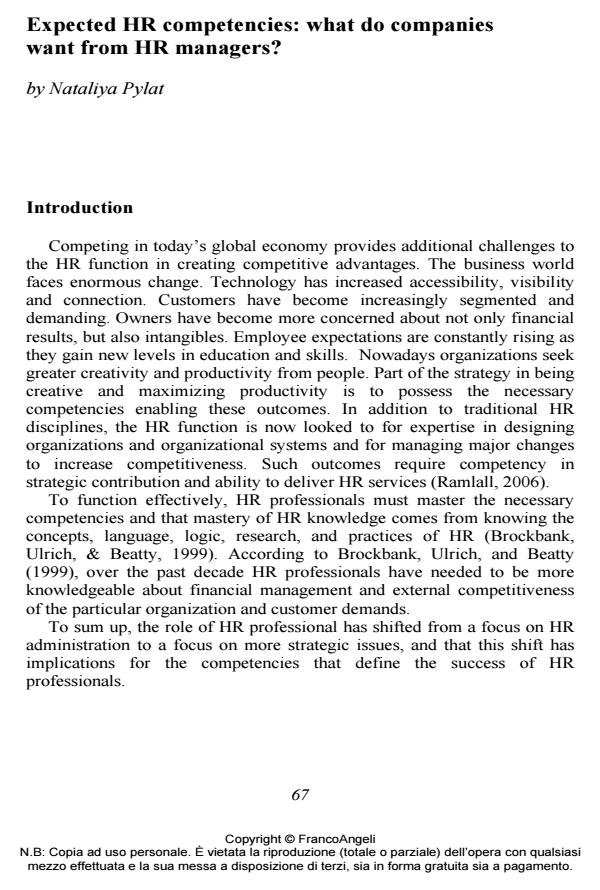Expected HR competencies: what do companies want from HR managers?
Journal title EDUCATIONAL REFLECTIVE PRACTICES
Author/s Nataliya Pylat
Publishing Year 2016 Issue 2016/1
Language English Pages 19 P. 67-85 File size 221 KB
DOI 10.3280/ERP2016-001006
DOI is like a bar code for intellectual property: to have more infomation
click here
Below, you can see the article first page
If you want to buy this article in PDF format, you can do it, following the instructions to buy download credits

FrancoAngeli is member of Publishers International Linking Association, Inc (PILA), a not-for-profit association which run the CrossRef service enabling links to and from online scholarly content.
In order to analyze educational needs for HR managers this paper examines current expectations concerning the HR effectiveness and the difference between global and regional trends: which notions about the HR effectiveness are common among the experts. The result of the group discussion indicates the most expected areas of HR competencies perceived by HR professionals in Ukraine: strategic contribution and business know¬ledge, effective communication, personal efficacy, people-oriented beha¬vior, mastering HR processes, strategic workforce planning, organizational culture, learning and personal development. At the same time there is no expectation among HR professionals about innovation, change, technology and social media.
Nataliya Pylat, Expected HR competencies: what do companies want from HR managers? in "EDUCATIONAL REFLECTIVE PRACTICES" 1/2016, pp 67-85, DOI: 10.3280/ERP2016-001006